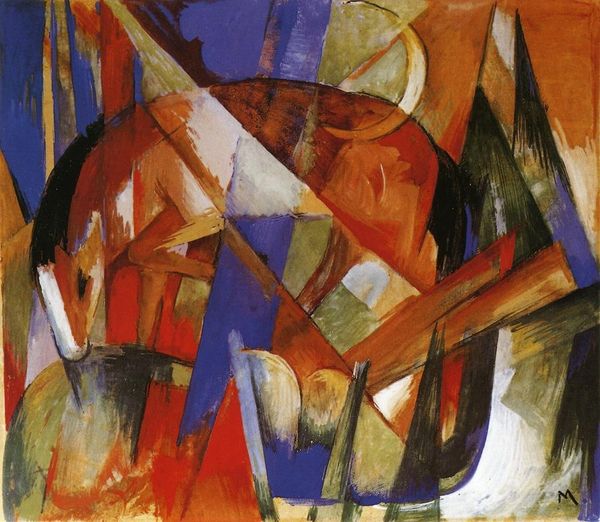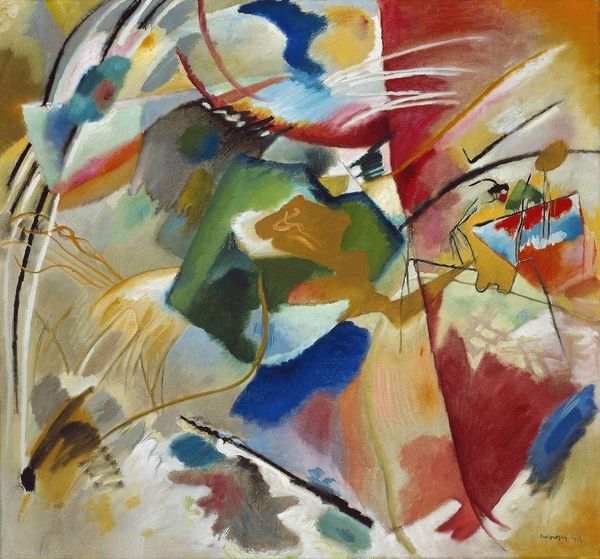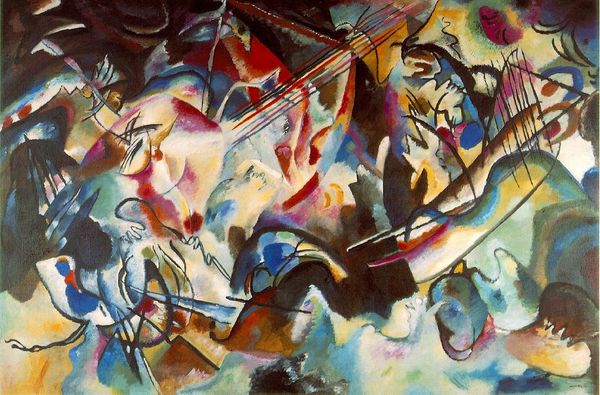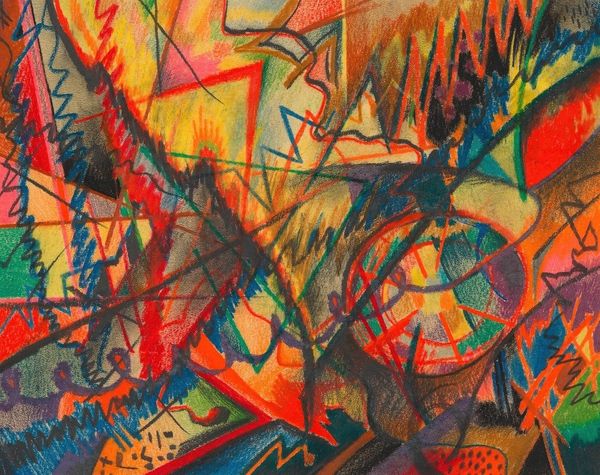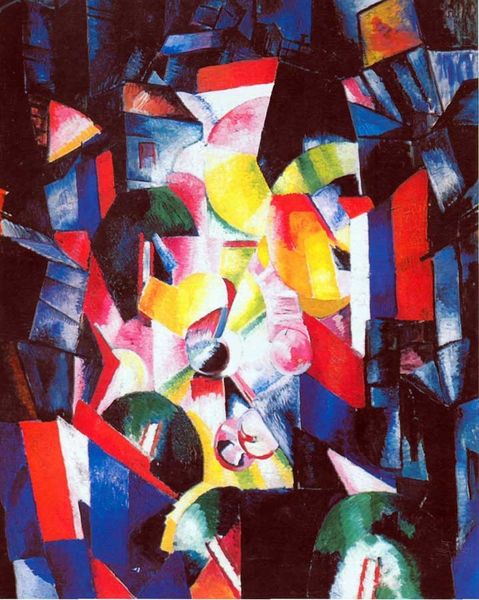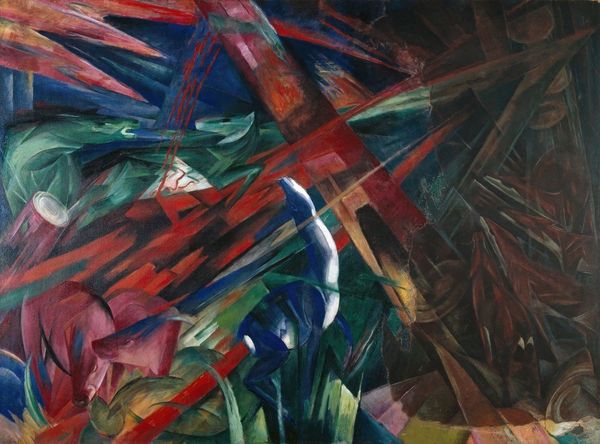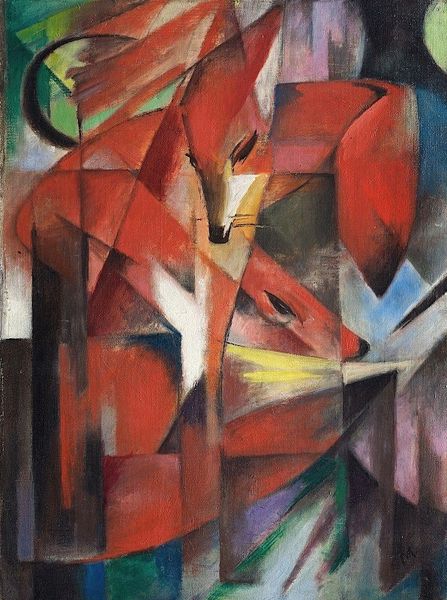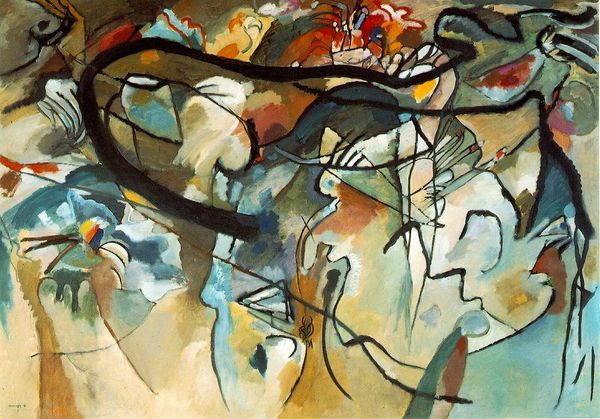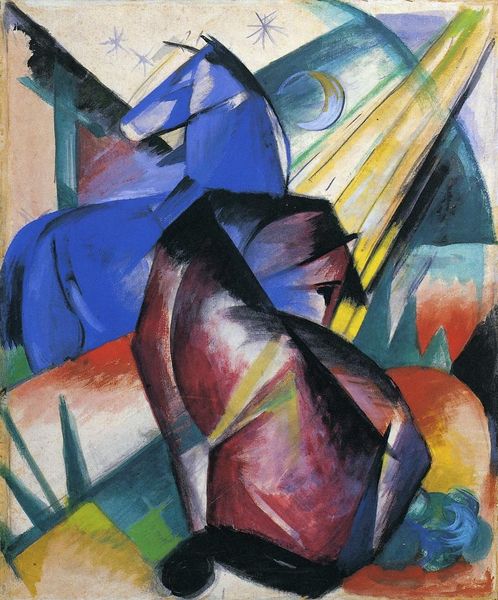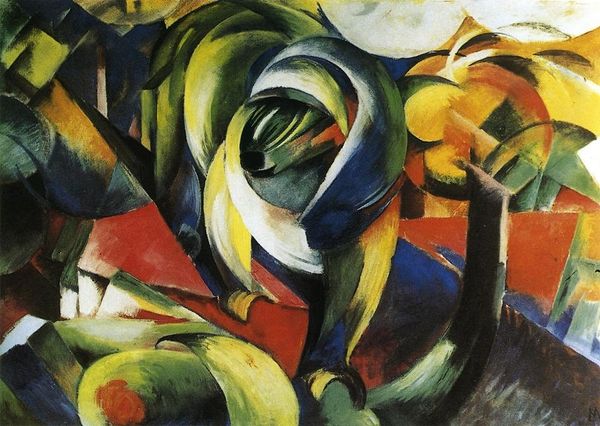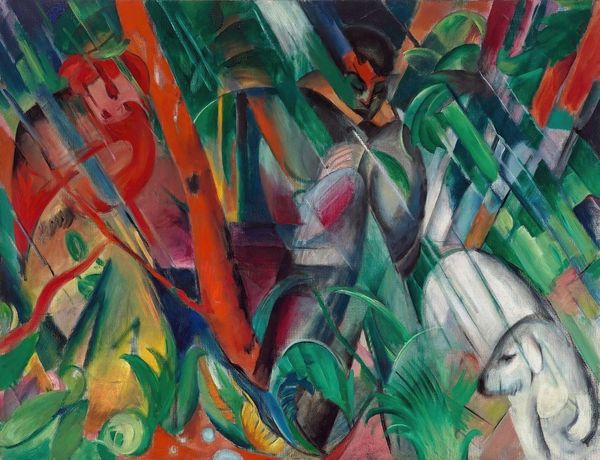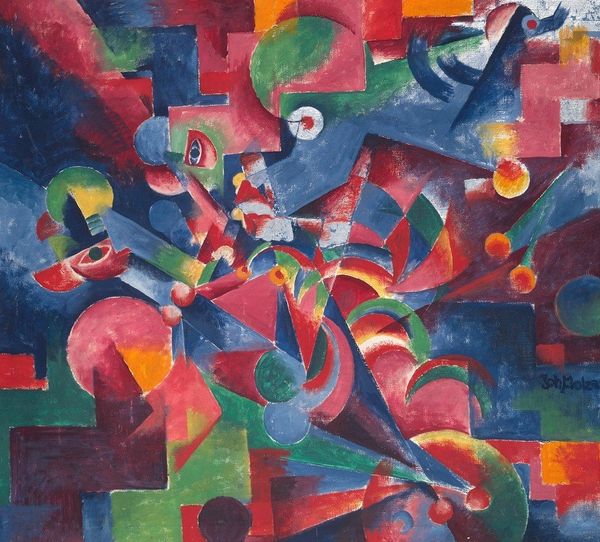
Dimensions: 135.7 x 144.5 cm
Copyright: Public domain
Curator: Here we have Franz Marc’s “Tyrol,” painted in 1914, an oil on canvas now hanging in the Neue Pinakothek. Editor: My immediate reaction is that the artist wanted to dismantle the familiar world before us. It looks aggressive, doesn’t it? Jagged and unstable. Curator: Instability resonates. Marc sought to depict the inner, spiritual reality of the natural world, moving beyond surface appearances. He uses color to symbolize emotional and spiritual states. Editor: And what’s so striking is the materiality, all of these thick impasto brushstrokes… The means by which Marc builds up this composition makes the work as important as any symbolism behind those blues, yellows, reds. Curator: Those colours are critical. The Fauvist influence here is evident in the bold, unnatural colours. Blue, for Marc, often represented spirituality and the masculine. Yellow embodied gentleness and joy. Editor: It is tempting to focus on symbolic intent, but you see it on the physical level too: the painting becomes a constructed thing, like the mountains themselves as a consequence of geologic plate tectonics or the homes people erected within those mountains. We’re encouraged to reflect on art as product and process. Curator: He saw animals as more spiritually pure than humans, but here, devoid of animals, is this landscape simply an arena of clashing energies. Are those two suns? They appear like two forces are tearing at the land itself. Editor: It speaks to the turbulent times in which it was created. 1914… You could read those geometric shapes, that dismantling you pointed out, as the fragmentation of society hurtling toward the war. What do you think would compel him to depict nature with such… aggression? Curator: He had expressed a need to seek a more authentic relationship with the world, moving away from representational accuracy towards an expression of inner, spiritual realities. But in that reality, did he forsee destruction? Editor: Maybe art doesn't so much "predict" as register. I will also not ignore, even while discussing spiritual intent and social context, the value and labour of paints, canvas, stretchers, all which render such artistic gestures possible. Curator: So, through material and motif, perhaps Marc captured an era on the cusp – that is, a cultural anxiety on the precipice of enormous upheaval. Editor: That is a sobering yet enriching note to end on. It pulls together how our insights and understanding of the artwork relies on those social, psychological, and art-making contexts.
Comments
No comments
Be the first to comment and join the conversation on the ultimate creative platform.
